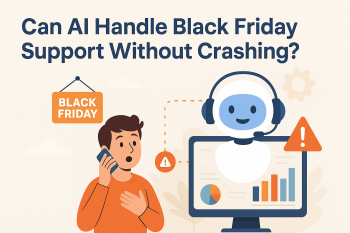In the fast-paced world of mobile app development, staying ahead of the curve is essential. UI software development kit Flutter has gained immense popularity for its ability to create high-quality cross-platform applications from a single codebase. Today, we will explore details about Flutter app development.
What is Flutter?
Flutter is an open-source framework developed by Google that allows developers to build natively compiled mobile & web applications. Known for its speed & flexibility, it uses the Dart programming language to create stunning user interfaces with a rich set of pre-designed widgets.
Flutter Advantages
Cross-Platform Development
A Flutter app can be deployed on multiple platforms, such as iOS, Android, and the web – using a single codebase.
Fast Development
Flutter’s hot reload feature allows developers to see the changes they make instantly – it makes development faster & more efficient.
Beautiful UI
With a rich set of customizable widgets, Flutter empowers developers to create stunning & consistent UIs.
High performance
Flutter compiles to native ARM code – resulting in high performance & smoother user experiences.
Large community support
An active & growing community means access to a wealth of resources, plugins, and packages to speed up development.
Also Read: Healthcare Mobile App Design: Key Guidelines
Getting Started with Flutter
You must set up your development environment to embark on your Flutter journey. Follow these steps:
Install Flutter
Download and install Flutter from the official website.
Set up an IDE
Flutter is compatible with popular IDEs like Visual Studio Code & Android Studio. To set up the Flutter plugin, install one of the IDEs.
Create a Project
Use the Flutter CLI to create a new project, and you’re ready to start coding.
Dart Programming Language
Dart is known for its performance and can be easy to pick up if you’re familiar with languages like JavaScript or Java.
Widgets
Widgets define the structure, layout, and behavior of your application. Flutter offers two types of widgets: StatelessWidget & StatefulWidget. Stateless Widgets are immutable, while Stateful widgets can change their properties over time.
Related Blog: How to Build a FinTech App: A Step-by-Step Guide
UI Design with Flutter
One of Flutter’s most significant strengths is its ability to create visually appealing UIs. It provides an extensive library of widgets that can be customized to match your app’s design. Additionally, you can use layout widgets like Row, Column, and Stack to create flexible & responsive layouts.
Hot Reload
Flutter’s hot reload feature is a game-changer for developers. It allows you to see the effects of your code changes in real time, speeding up the development process and making it more efficient.
State Management
Managing the state of your app is crucial. Flutter provides several options for state management, such as Provider, BLoC (Business Logic Component), and Redux. Choose the one that best suits your project’s requirements.
Testing & Debugging
To ensure your app is free of bugs and runs smoothly, you should make testing & debugging an integral part of your development process. Flutter offers a range of testing & debugging tools to help you achieve this.
Don’t Miss: The Step-by-Step Guide to E-Learning Software Development
Building for Multiple Platforms
With Flutter, you can target multiple platforms from the same codebase:
iOS
Use Xcode to build and run your Flutter app on an iOS simulator or a physical device.
Android
Android Studio can build and run Flutter apps on Android devices & emulators.
Web
Flutter enables you to create web applications that work in modern web browsers.
Desktop
Flutter has experimental support for building Windows, macOS, & Linux applications.
Must Know: How to Choose a Mobile App Development Framework: A Beginner’s Guide
Performance Optimization
To ensure your Flutter app performs at its best – consider the following performance optimization techniques:
Reduce widget rebuilds
Minimize unnecessary widget rebuilds by using constant constructors for stateless widgets and leveraging the rebuild method for stateful gadgets.
Avoid Deep Widgets
Keep your widget tree shallow to reduce the number of widget builds and improve performance.
Use lazy loading
Load data or assets on-demand to avoid long loading times and reduce memory consumption.
Optimize asset management
Use assets efficiently to reduce app size and improve loading times.
Code splitting
Split your app into smaller, more manageable chunks to load what is necessary to enhance performance.
SEO Optimization
While SEO optimization primarily applies to web applications, it’s essential to ensure your Flutter web app can be discovered by search engines. Follow these tips:
Deployment
The app must be deployed to the respective platforms to make your Flutter app available to users. Follow the platform-specific deployment guidelines for iOS, Android, web, or desktop.
Maintenance & Updates
Once your app is live, ongoing maintenance is crucial. Regularly update your app to fix bugs, improve performance, and add new features to keep users engaged.
Conclusion
With Flutter’s robust features, a vast community, and the ability to create beautiful natively compiled applications – it’s an excellent choice for beginners & experienced developers. By mastering the fundamentals, you can create outstanding apps that delight your users and stand out in the competitive world. Whether you are a startup or working on a corporate app, Flutter’s versatility and power will serve you well. Happy coding!
Written By
Author's Picks
- Top Strategies To Optimize Mobile App Speed For Better User Retention
- 24/09/2024
- How to Build a FinTech App: A Step-by-Step Guide
- 05/09/2024
- How to Build an App Like Uber: A Comprehensive Guide
- 10/09/2024
Categories
- AI for Startups
- AI in Web Development
- AI Integration
- AI Platforms
- AI Prompt
- AI Tools
- AI Trading Software
- Android App
- Android vs iOS Development
- Angular
- API
- API Development
- App
- app development
- App Idea
- App User Feedback
- Application
- Artificial Intelligence
- Audit Services
- Automotive Industry
- Awards and Recognition
- Business Consulting
- Business Website
- Chatbots
- CRM
- CRM for Financial Advisors
- Custom CRM
- Custom SaaS
- Custom Website
- Customer Service
- dashboard design
- Developing a Mobile App
- Digital Business
- E-commerce
- EMR Integration
- Finance
- Financial Advisors
- Financial Advisors
- GIT
- Health Insurance
- iOS App
- iOS App Development
- IoT Mobile App Development
- IoT Platforms
- IT Audit Services
- IT Consulting
- IT Strategies
- Java Development
- Laravel
- Lean Canvas
- Learning Management System
- Logistics Apps
- Mobile App Development
- MVP
- Native App
- News Aggregator Site
- OTT
- Outsourcing IT
- Payment Gateway
- predictive analysis
- Product Launch Strategy
- Progressive Web App (PWA)
- Prototype
- Recommender Systems
- Ruby
- SaaS
- SaaS Application
- SaaS Business
- SaaS Company
- SaaS Development
- SaaS Product
- SaaS Project
- Sales Funnel
- SEO
- Shopping Cart
- Software Development
- SSL and TLS
- Startup Checklist
- Technology
- Tetradic Color Scheme
- UI/UX Design Company
- Unit Testing
- User Flow
- User Testing
- Web Development
- Web Performance Optimization
- website Maintenance Services
- Website Migration Service
- Website Speed Optimization
- WooCommerce
- WordPress





